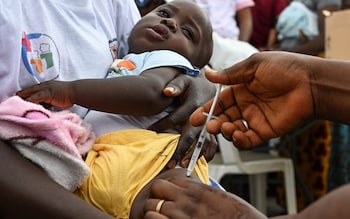The Black Death plague, bird flu and mpox are among 24 threats that have been added to an influential watchlist of the pathogens that could trigger the next pandemic.
In the first update since Covid-19 swept the planet, a World Health Organisation (WHO) panel has dramatically expanded the scope of its index of so-called priority pathogens.
Already notorious diseases like Zika, yellow fever and avian influenza have been added, alongside lesser known threats such as Sin Nombre virus – which jumps from deer mice to people and has a fatality rate of 30 per cent in the US. Several bacteria, including cholera, the plague and salmonella, have also been incorporated for the first time.
The watchlist may sound like more WHO jargon – especially its name, the R&D Blueprint for Epidemics – but its contents have become hugely influential since the first iteration was published in 2017.
Not only did it popularise the concept of ‘Disease X’, an as yet unknown pandemic threat, but the exercise pointed out the most dangerous diseases for which there were no vaccines, diagnostics or treatments. Since then, it has been used by scientists and research consortiums around the world to prioritise research.

The list, first published in 2017, pointed out the most dangerous diseases for which there were no vaccines, diagnostics or treatments
Credit: SIA KAMBOU/AFP
“In our world, [the blueprint] has been a very big deal,” said Dr Richard Hatchett, chief executive of the Coalition for Epidemic Preparedness Innovations (Cepi), which funds vaccine research. “It helped focus attention on a set of pathogens that had been neglected, effectively because there were no commercial drivers for countermeasure development.”
He pointed to one example as the “signal success” to date: Middle East Respiratory Syndrome (Mers), a close relative of Covid which featured on the first priority pathogen list.
“That certainly helped those of us who were trying to fund programmes to justify our investments in developing Mers vaccines,” Dr Hatchett told the Telegraph. “And it was that investment in solving the general coronavirus design problem that, I think, enabled the rapid pivot to Covid.
“At least the Moderna vaccine and the AstraZeneca vaccine were direct pivots from the Mers vaccine development programmes, so to that extent it’s been really, really important,” he said.
But while pre-pandemic lists focused on a narrow set of around a dozen priority diseases, the latest blueprint includes well over 30. It also creates a set of prototype pathogens for 22 major families of viruses, in an attempt to replicate the success seen with Mers and Covid.
Dr Hatchett said this updated approach was not so much a reflection of a major shift in the underlying risk each disease presents, but an evolution in the thinking of the scientific community about how best to prepare for pandemic threats.
“By getting to know as much as we can about each of the pathogen families that are most likely to harbour the next pandemic-causing disease, scientists can get a head start in creating new medical defences such as vaccines and treatments that can be swiftly adapted to target a new disease,” he said.
“Think of it as a jigsaw, with each family representing a part of the puzzle. The new pathogen family framework maps out each of these families and will help to coordinate the efforts and resources of institutions around the globe… and put the pieces together to solve the problem of pandemics for the world.”
Speaking at the Global Pandemic Preparedness Summit in Brazil at the end of July, the WHO’s Dr Ana Maria Henao-Restrepo, who co-leads the project, used a different analogy: the ‘streetlight effect’.
“This is the metaphor of the drunken man looking for the lost keys under the streetlamp. The first place where the drunken man is going to look for his keys is under the light. The light areas are the pathogens for which we have a lot of information today, we know that they are global threats… but we want to expand that light area,” she said.
“So one way to expand… is [to use] prototype vaccines which are pathfinders, who will help us develop medical countermeasures that maybe can be useful for other pathogens in the same family.
She added: “So we are now promoting research in all the viral families, regardless of the pandemic threat potential that we perceive today, because the pandemic threat potential that we perceive today is based on the data and the knowledge that we have today.”
To further this strategy, the WHO has also announced that institutions across the world will become central hubs (dubbed a Collaborative Open Research Consortium, or Corc) for different pathogen families, leading and coordinating work between partners – from funders to researchers and regulators.
But Dr Henao-Restrepo added that it is “improbable” that the next pandemic will be caused by a disease we know – which is why experts must still plan for Disease X.
“The concept of pathogen X… says there is uncertainty, and there are pathogens in these less illuminated, less studied areas that we still need to pay attention to,” she warned.
Protect yourself and your family by learning more about Global Health Security


